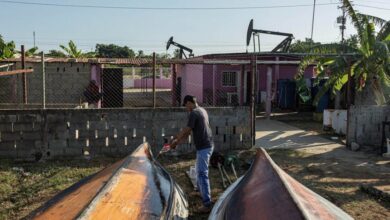Covid-19: countries begin to ease restrictions
Countries in Europe begin to lift the restrictions by COVID-19 to boost economies.

Coronavirus restrictions have begun to change in some countries. / Photo: Rawpixel – BRISTOL, UK
Escucha este artículo
Leer en español: Coronavirus: países comienzan a ablandar restricciones
Some countries have begun to change the restrictions of daily life to activate economies amid the global crisis that has brought the coronavirus. Although social distancing measures continue in most of the world and contagions continue to increase, economies must move and countries begin to experiment with plans that will not harm health or worsen the situation.
The most recent case of "triumph" over the virus has been in New Zealand. On Monday, April 27, Prime Minister Jacinda Ardern announced that the virus was currently eliminated in her country. This news came after several days in which local infections have been stopped after having only one infection on Sunday. Reaching this point does not mean that there are no new infections or that the virus has disappeared from the country, so there is still risk and the necessary measures must be taken. What this announcement represents is that the government currently has more control over the new cases and can determine the source of the contagion and thus contain the spread.
Over the months, New Zealand had 1,500 cases and 19 deaths, so the news is a window of opportunity to resume economic life little by little. The authorities of that country announced that the measures will continue and that some economic issues will resume, but not social life. Some commercial activities may be resumed and meetings between family members or close circles will be allowed, but keeping a distance of two meters.
According to the BBC, experts have referred to the New Zealand case highlighting the possible ease of containing the spread given its geographical location: "New Zealand's remote location and ease of closing its borders worked in its favor when the virus broke out." This, also added to the early measures that were taken in the country, is what has allowed to reactivate its economic life.
According to Tredos Adhanom, WHO director, “some countries are considering when they can lift these restrictions, others are considering whether they can and when to introduce the measures. These decisions must be based on protecting people's health and guided by what we know today ”.
Also read: Coronavirus: the reality of Latinos in the US
Previously, the organization explained 6 measures that must be followed in each country to start lifting the quarantine:
1. That the transmission of the SARS-CoV-2 is controlled.
2. That the health system has the capacity to care for infected people.
3. That outbreaks of COVID-19 in care centers and other centers where people with a high degree of vulnerability to the virus, such as older adults, have been minimized.
4. That the authorities have implemented prevention measures in crowded spaces.
5. That a plan has been implemented to prevent the arrival of imported cases to prevent the spread from spiking again.
6. That the population has become aware of the severity of the health crisis and is committed to preventive measures.
Like New Zealand, other countries have begun to activate protocols that facilitate the development of economic activities. Some comply with these WHO conditions and others will simply soften the measures, but keep the distance. These processes will take time to completely return to normal but will allow the economies of the countries to continue operating and prevent further damage.
In Europe, where months ago it was the epicenter of the virus but has already exceeded its highest peaks, some restrictions have begun to be removed. Even the most affected countries, such as Spain and Italy, will begin to implement processes that allow some sectors and industries to reopen.
Some small businesses will begin to open in these and other countries in Europe, trying to revive the economy that until now has been operating only virtually. The construction, manufacturing and agriculture sectors are also beginning to see a normalization in their routines little by little.
The countries that will begin this transition are setting special security measures for the services that begin to open, but in all of them the measure of preventive isolation and social distancing will continue. In this way, only the specific people of these industries will be able to be on the street and travel in cities will be limited to the essentials (going to work, shopping, using medical services, etc.).
Austria, the Czech Republic, Denmark, Norway and Iran, the only country in Asia that begins with this decision, are other of those that will begin from the last week of April and the first of May these processes.




